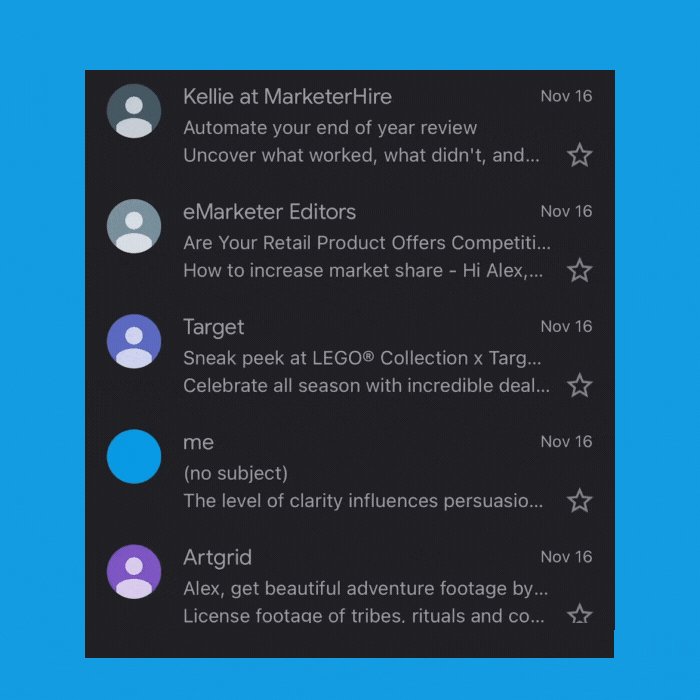My last email had a 48% open rate.
With iOS15 putting fear into every email we send, I thought I'd break down how I've been able to increase my open rate by 12% on avg.
Gimme 4 min...





Curious about how a company with a $1.6+ trillion market-cap writes persuasive copy?
— Alex Garcia \U0001f50d (@alexgarcia_atx) April 11, 2021
Use these 7 tips to write like an Amazonian \U0001f9f5 pic.twitter.com/tKLAxyUCVb
What was the common denominator in the fastest growing companies like Dropbox, Netflix, Yelp, and Instagram?
— Alex Garcia \U0001f50d (@alexgarcia_atx) May 9, 2021
Growth loops.
Not funnels.
Here are 6 examples of growth loops that will help you acquire and retain users \U0001f9f5 pic.twitter.com/Wu4i8ReQ62
I've studied hundreds of growth-hacking strategies.
— Alex Garcia \U0001f50d (@alexgarcia_atx) May 7, 2021
These 7 are proven to work \U0001f9f5
How did Facebook, Zapier, and Tinder drive growth early on?
— Alex Garcia \U0001f50d (@alexgarcia_atx) May 7, 2021
Growth-Hacking.
PayPal growth-hacked its way to 5M users in 3 months.
Tinder used sororities and frats to 3x their user base.
Steal these 7 growth-hacking strategies that led to millions of users\U0001f9f5
Twitter threads are the new blogs.
— Alex Garcia \U0001f50d (@alexgarcia_atx) May 6, 2021
Over the last 5 weeks, I've 32x my Twitter following posting a thread a day.
These 15 learnings will help your threads go viral \U0001f9f5
As a dean of a major academic institution, I could not have said this. But I will now. Requiring such statements in applications for appointments and promotions is an affront to academic freedom, and diminishes the true value of diversity, equity of inclusion by trivializing it. https://t.co/NfcI5VLODi
— Jeffrey Flier (@jflier) November 10, 2018